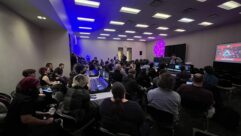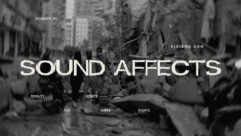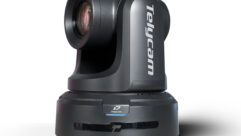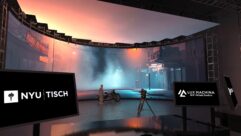Photos by Christy Francis
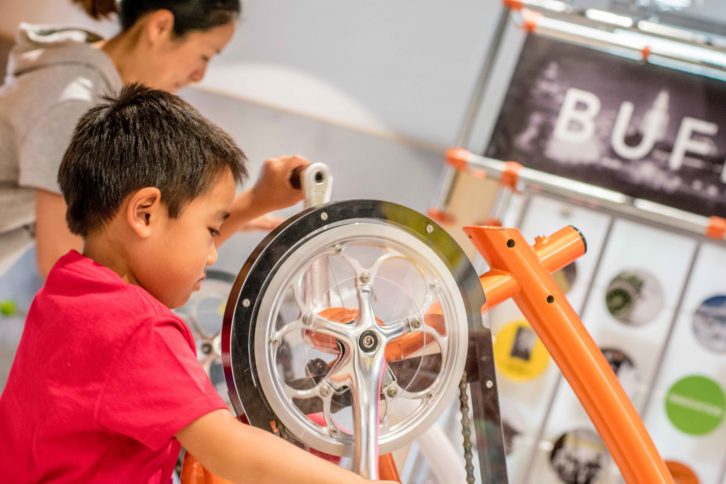 On this edition of the SVC Podcast, Contributing Editor Bennett Liles talks with Heather Sidorowicz of Southtown AV about the new Explore and More children’s museum in Buffalo, New York. Heather takes us through the workings of some of the exhibits and explains how system programming can keep the hands-on exhibits fresh for returning visitors. She also leads us through the initial installation steps.
On this edition of the SVC Podcast, Contributing Editor Bennett Liles talks with Heather Sidorowicz of Southtown AV about the new Explore and More children’s museum in Buffalo, New York. Heather takes us through the workings of some of the exhibits and explains how system programming can keep the hands-on exhibits fresh for returning visitors. She also leads us through the initial installation steps.
FOR MORE: GO TO PART 2
- Southtown AV (SAV) in Hamburg, New York
- Explore & More – The Ralph C. Wilson Jr. Children’s Museum
- 65-inch Sony Bravia 4K HDR displays
- D-Tools System Integrator AV project management software
TRANSCRIPT:
For children, an immersive technology is one they can operate themselves and at the new Explore & More Children’s Museum in Buffalo, New York they’re free to touch and operate everything. Local integrator Southtown Audio Video applied the project design and engineering. Heather Sidorowicz is going to tell us how they made it all happen, coming up on the SVC Podcast.
Heather, nice to have you with us on the SVC Podcast from Southtown Audio Video and I believe you’re in Hamburg, New York.
We are, which is just south of Buffalo, New York. And yes, yes, yes we already have snow. [Timestamp: 0:44]
Wow, hard to imagine that in Atlanta but while we’re roasting in the summer it’s probably pretty nice up there.
The summers are amazing. I love where I live. I’m a big Buffalo fan. [Timestamp: 0:53]
Just a few weeks ago we were having 95-degree days and now we’re shivering. Probably not what you would consider to be cold.
[Laughs] No, probably not. Probably not. [Timestamp: 1:00]
Well, this place, the Ralph C. Wilson Children’s Museum, Explore & More. That’s an incredible place and your outfit got in there and did the whole AV system on it. So give us a little history and background on Southtown Audio Video.
Sure. So Southtown Audio Video has been around since 1984, so we’re actually celebrating our 35-year anniversary this year, which just happenstance that all these things happened at the same time. So in 1984 it was actually started by my father and it was a hi-fi shop. And he went from, you know, as technology changes faster and faster it went from a hi-fi shop to at one point he rented both beta and VHS tapes. This is long before Blockbuster. He was a satellite company. He did six-foot satellite dishes for bars and homes to the small dishes. I started with him in the early 2000’s. I always joke that my AV career is 18 years old now so it’s old enough to vote for itself. And when I started it became more of a home theater shop as well. And then as that continued to change, in like the 2013-ish time, we could see the renaissance of Buffalo. So Buffalo is an old steel town. We were, I believe, the second-richest city in 1901, but kind of downhill from there. And we’re on our way back up again so Buffalo is fantastic and it’s really growing through our medical corridor and through many, many other things, and can see the need for commercial where you have a relationship where you take care of your clients. And we started pointing our ship towards that direction. I bought the company in 2014, so five years ago, and today we are about 85 percent commercial and the rest of that is what I would call relationship residential. And where do we like to play? We play in the corporate AV world – of course education, healthcare. My current favorite is immersive technologies like the one that we’re going to speak about today. And again, what I call relationship residential. So it’s not just, “I want to buy a TV from you,” but, “Hey, I bought a new house and I want someone to care about more than just selling me this TV.” Those are our clients on the residential side. [Timestamp: 3:17]
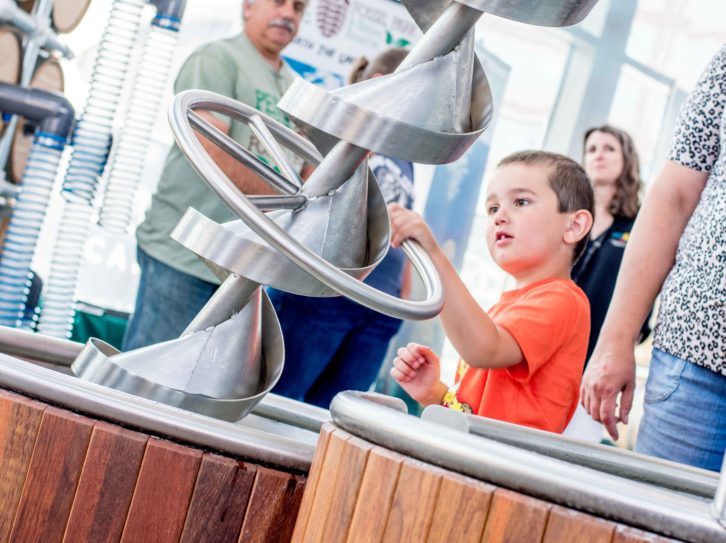
You certainly got some immersive technology going at that unique museum. So what’s the idea behind Explore & More which is what they call the place?
So Explore & More was this small, little place in actually East Aurora, New York for many, many years. And as Buffalo continued to grow they had this opportunity to open this state-of-the-art children’s museum; somewhere where you could interact, somewhere that was autism-friendly, somewhere you could go back over and over again. And we worked with the exhibit company to help bring these concepts, these ideas, to life. This was actually a three-year-long project so three summers ago this was in front of me from the exhibit company where it was just concepts. “Hey, we want this to happen and we don’t know how to make that happen.” So we were able to design in how to put forth, how to make that happen and we worked with the exhibit company to do that to get to where we are today. [Timestamp: 4:16]
And to get kids in there, totally hands-on with exhibits that they can operate themselves. You’re dealing with some short attention spans for the most part so you’ve got to get them in and get them involved right away.
That is correct. And there’s multiple different exhibits that do that. They pay heritage to Buffalo because in 1901 we were called the City of Light. I believe we were the first or second to get power, but also we had the Erie Canal. So there’s a whole space, it’s actually the second floor, that has a water table area you can actually create with the canal. You can separate the water and sail a boat through different locks. There is a exhibit that is built like a canal but would be with interactive pieces of where you open up a cupboard and it tells you a piece of history. There is a rudder in the back of the “boat” and if you push it one way it says Starboard and the other way it says Port. So these small interactions – and I think that some people will go in and not think of it as an AV experience because it’s interlaced really well with what else is there from just a touch/taste experience point from the exhibit. [Timestamp: 5:25]
I think you’ve remarked that this project represents your favorite segment of AV, so why is that?
Well, you know, it takes our history and who we were and who we are now. So I think in residential land you’re more likely to do kind of some crazy things. I always joke that I had a client once 13 years ago. He was a hedge fund guy and he wanted to scare his brother so he paid for us to install a hidden speaker that has a wolf sound so when his brother was sleeping he could play this wolf sound. So these really bizarre things you do in residential land, but you can take that to immersive technology and apply this unique way to get to the answer. It’s not so cut and dried. I mean, how many conference rooms can you do? And we always try and make sure we’re doing the right solution for the client, but immersive technology, it’s a little bit more fun to figure out how to get there. And I really enjoy what I do so that part is a lot of fun to me. [Timestamp: 6:24]
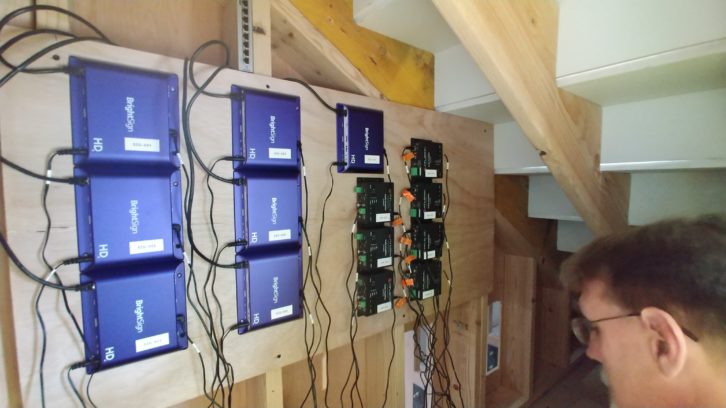
And I think along the way with this there were probably some changes. That’s the normal thing that happens. Revisions?
Yes.
So how did you manage to design this project? What did you use to keep track of things?
Huge with D-Tools. So we started this project originally in D-Tools. The nice part about that is we could go per exhibit and talk about the scope. So number one three years ago was putting in what they requested and just being able to divide that down between me, who’s more sales-y and the system engineer, so we could go back and forth in communication. And then as the scope would change we could continue to make those changes over time. Then the company itself actually had a CEO change, so that actually changed a lot of the exhibits right in the middle. And so again, creative revision. In D-Tools we can get rid of things but knowing that it was still there if we needed to go back to it and then build upon whatever the new scope was or the new exhibit or how it changed. So D-Tools was definitely – we couldn’t have done it without it. I really just don’t see another way that we could have done such a large, intricate project without having that by our side. [Timestamp: 7:35]
And keeping track of all the technical areas plus the labor all in the same project.
Yes.
And so I know that the idea is to get the kids totally physically involved in this thing. You mentioned the canal boat exhibit and you have motion sensing to see when they come into the rooms.
Yes.
I believe you have a Brightsign server as well.
We do. So the motion sensor was provided by the exhibit company, so let’s talk about that rudder for a second. When they push or pull the rudder that initiates through the motion sensor which launches a command in Brightsign Player to play through a speaker that sound effect. So that happens in many different areas. Also underneath the boat there’s these little cupboards and cabinets so they can dress up, but not only dress up but when they open the cupboard or cabinet the motion sensor says it’s open, Brightsign Player launches the audio command, and then through a small hidden speaker you hear a bit of that story. [Timestamp: 8:35]
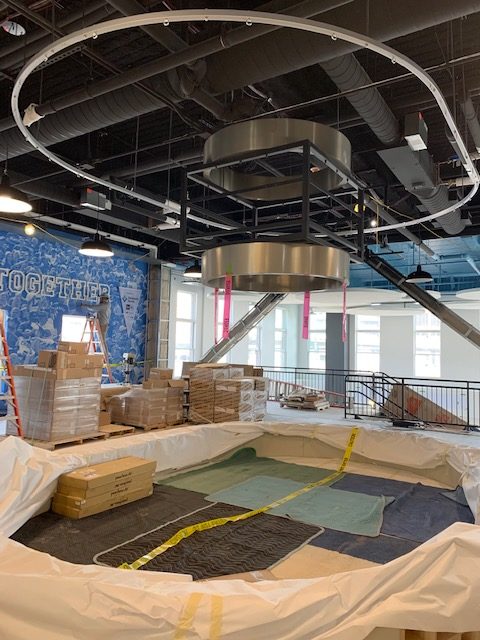
Engages the kids, keeps them busy. Not only that, it’s very visual which is really essential with children. So how do you keep the exhibits new and fresh when the kids have a return trip?
Well first of all, as I mentioned, it’s multiple floors so you can spend maybe about two hours there but you’ll want to go back because you’ll want to play again. And also the exhibit company themselves has created ways of new exhibits. So they have one exhibit that will continuously change throughout the years so that there’s always a reason to go back. They also have another area that there’s a place for cooking classes so they can actually have a farm-to-table experience. And that’s through a local grocery store actually committed to helping and being part of that. So on the top floor there’s actually a farm where these kids can pick a carrot – not a real carrot, but a plastic carrot – but there’s kids out there that don’t know the experience of where a carrot comes from or that tomatoes grow on a vine. And then interlaced with that technology there’s a rooster that crows every now and then, right? That’s a hidden speaker and again a Brightsign player. And on the other side there’s a whole hospital exhibit that will allow kids to actually get an MRI of their teddy bear. Now that one’s an interesting one because they wanted it to be loud and a little bit intrusive because MRI’s are super scary for kids. So once they had that experience there at the museum, if they’re ever in a situation where they have to have an MRI they’ll know and not be as afraid. So it’s really this great piece of helping kids long term. [Timestamp: 10:08]
Not just arbitrary exhibits but it gets them involved in real world concepts.
Correct.
I saw one of these that simulates ice skating wearing their socks.
They do, yeah.
And you have some 65-inch Brightsign monitors above that and you can show the kids themselves on the display.
Yes. So they wanted to create a small of our Sabres, right? Buffalo is a big – ha – a big sports town. I giggle because we also often say a sports town with a drinking problem or a drinking town with a sports problem, one of those. [Laughs] Not with the kids, that’s just the adults. So they created a mini ice rink to experience what it’s like to go to a game so the kids can be on their socks and skate round but above them is a “Jumbotron” and that was created with Sony 65-inch commercial displays. We chose them because of their high brightness, high contrast ratio so there’s no issues, and of course RS232 for control. Those go back to Brightsign players. A local company did the content. The content is interlaced with cameras throughout the floor so that just like the kiss cam or when they’re at the hockey game if they’re dancing around they might be on the Jumbotron, that this constantly is changing so that in a different exhibit they might show up on that screen which you can see from one place to the other. [Timestamp: 11:29]
Probably their favorite thing to see on the monitors is themselves anyway.
Of course. Of course.
When you first got in there what was the first step in the installation process once you were onsite? Was there construction still happening?
Yeah. So this was definitely a hard-hat, high-vis type area. For months I kept that all in my car for the times I would stop down. So yeah, for months we were in hard hats and we were working with other subcontractors. My team’s great like that because they work with the other people. They talk to them. I think that’s a huge piece of the story. We just don’t go in and say get out of our way. There’s something to be said about humanism. But the first step was to make sure that wires were run that we needed that were promised. And then testing, of course. And then going through exhibit by exhibit creating a punch list of what continued to be done and then just working through each project. It was definitely an eye-opening experience for us from a project management standpoint. We found, certainly, some holes that we have to tighten as we continue along this train of our business. But yeah, it was a lot but it was really quite cool. [Timestamp: 12:41]
Well it’s been wonderful hearing how you got it all started. We’ve been talking with Heather Sidorowicz of Southtown Audio Video in Hamburg, New York about the Ralph C. Wilson Children’s Museum Explore & More. Really gets the kids immersed and the AV that works behind the scenes to make it all happen. In Part 2 we’ll get into control and some other aspects of it, how you got the sound to work right. That’s going to be nice to hear and thanks for telling us about this one.
Absolutely. Thanks for having me.
And now the people of Buffalo have a new exhibit to be proud of and the kids can go hands-on to see how basic machines work. Next week Heather will be back to give us the story on the cameras, video displays and control system on the next SVC Podcast.


